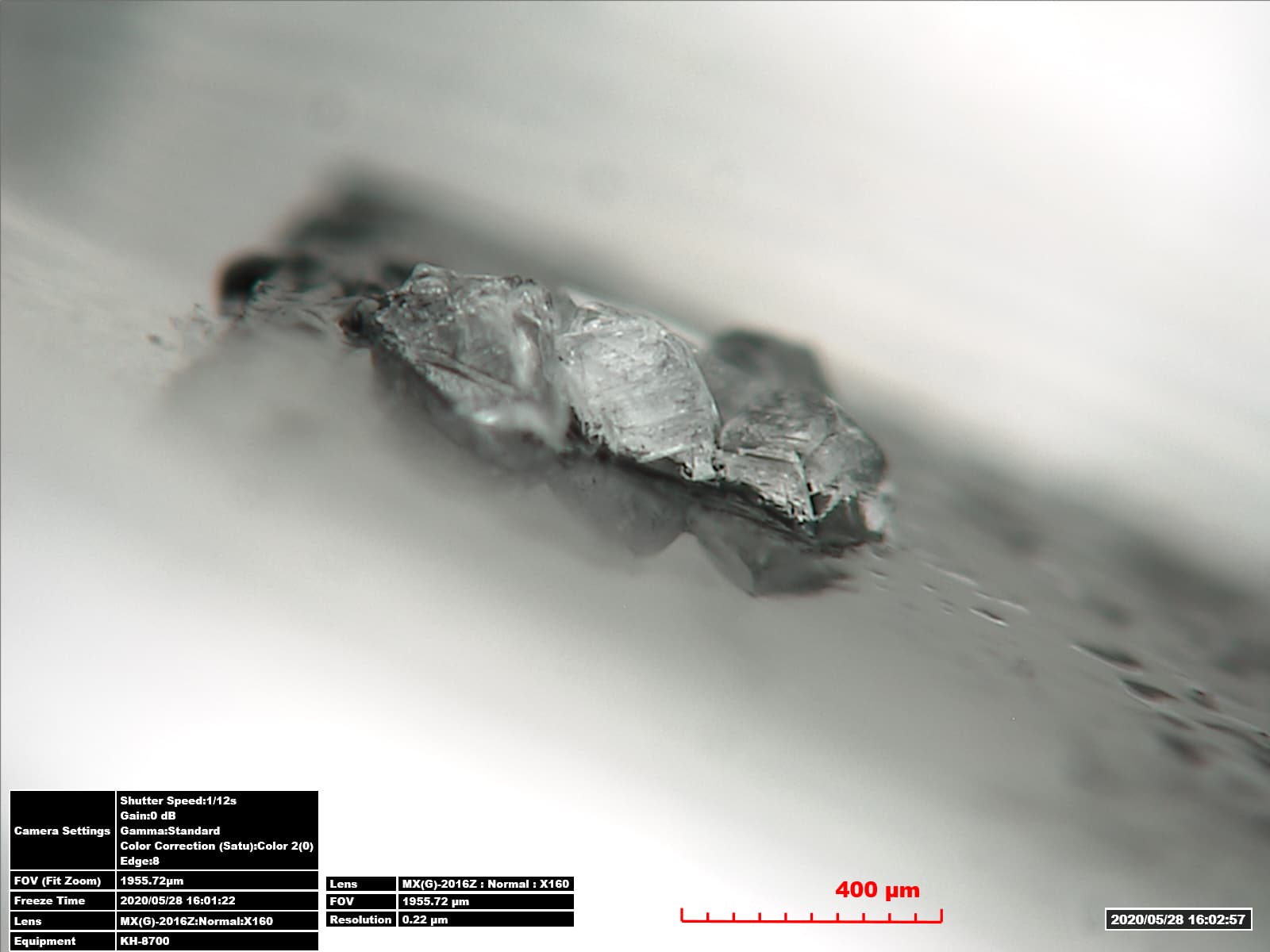Sodium chloride (NaCl) is the most common and well known salt with a relatively stable equilibrium relative humidity (ERH) at different temperatures (75.38% RH at 293.15 K). Because of its well known behavior this salt is chosen to carry out initial experiments. A NaCl crystal is observed with a 3D digital microscope (as shown in the images below) under changing RH conditions within a small climate chamber. The experimental setup allows the identification of dissolution and crystallization rates. Rapid changes in RH are carried out by conditioning a crystal until complete dissolution at 90% RH followed by a decrease to 70%, which is below the ERH of NaCl. The time it takes for a crystal to grow is recorded and considered as the crystallization rate. The procedure continues by increasing the RH back to 90% to record the dissolution rate over time. The experiment is repeated in steps of 10% RH decrease, more specifically from from 90% to 70%, back to 90%, down to 60% and so forth to a minimum of 10%. The crystallization and dissolution rates will be represented in graphs considering the specific RH targets. The next steps of this research include similar experiments with a range of different single salts and mixtures.
